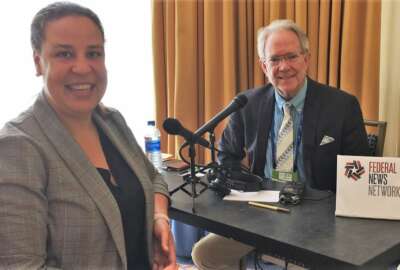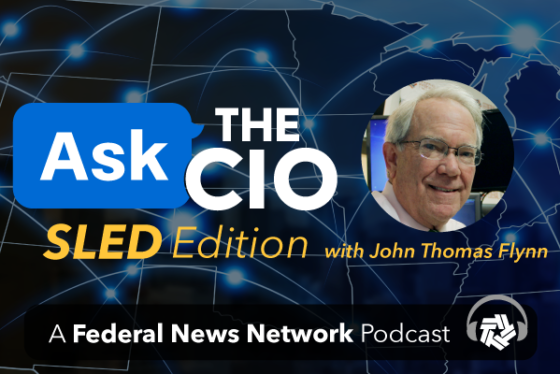
State CIOs look back on 50 years of transformation
The state CIO association has experienced profound changes as it celebrates its 50th anniversary. John Thomas Flynn interviewed NASCIO's president and the forme...
State chief information officers (CIOs) these days come in all different shapes, sizes and backgrounds. That was not always the case. Back when I attended my first state IT conference in 1992, I was actually the host in Boston and my new colleagues were primarily data center managers and state IT officials who liked to attend conferences.
In fact there were no state CIOs in attendance back then, and the group’s official name reflected this: The National Association of State Information Resource Executives (NASIRE).
I was elected NASIRE president in 1998 while CIO in California and throughout my term lobbied hard for a name change to the National Association of State Chief Information Officers (NASCIO). It wasn’t until 2001 that the association name finally caught up with the reality of conference attendees whose job titles each year were more and more frequently known as CIO.
It was a huge change and there were more than a few feathers ruffled among those without clear statewide IT authority back in their state capitals. For the first time ever the Credential Committee had something to do, as membership specified that each state member would be the single state IT authority appointed to that role by legislation, appointment or other official act. At the conference where the new name was voted on and approved by state members, Washington state CIO and friend, Steve Kolodney, announced the new name, calling it the “John Thomas Flynn rule.”
More seriously, today, all NASCIO state members are appointed by their governor and more than half are members of the cabinet, a far cry from the modest days of a quarter century ago. These state folks and their 550 closest vendor partners assembled this month for NASCIO’s Midyear Conference at National Harbor just outside Washington, D.C., which coincided with the organization’s 50th anniversary.
In the photo of all the former state CIOs at the right, I’m the good looking one, standing fifth from the left.
According to NASCIO Executive Director Doug Robinson, these 21 former state CIOs represent 103 total years of state IT experience.
Former state, current county CIO explains differences
While at the conference, I caught up with long-time friend Aldona Valicenti who is the current commissioner and CIO for the Lexington-Fayette County Urban Government in Kentucky. We first met when she was Kentucky’s first CIO back in 1998, and have served together since then on the U.S. Government Accountability Office’s Executive Council for Information Management and Technology.
Having made the relatively rare leap from state to local government IT, she shared her perspective on the differences.
“If you have the backing of your elected officials and your mayor in a city and you’ve got the funding, it’s really much faster to move and you can implement things much faster,” she said.
We often hear similar sentiments from our colleagues who have gone from state capitals to inside the Beltway for federal CIO appointments. The pace of the larger entity is much slower.
However, what Valicenti said next was most interesting: She mentioned that oftentimes we talk about citizens at the state level in a rather remote way.

“When you’re working at the city-county level, it’s very real. People watched you if they’re insomniacs on TV broadcasts of the mayor’s meetings, the council meetings, the committee meetings, and I’m there very often so they know who I am,” she explained. She said she’s even recognized in the grocery store line. “And right now they tap me on the shoulder and want to know when their fiber is coming to their neighborhood.”
Now that’s accountability!
NASCIO president brings change
We capped off our NASCIO conference interviews as well we should by spending a few minutes with James Collins, Delaware state CIO, current president of NASCIO and a very busy guy these days. Collins is half way through his one year NASCIO tenure and his plate has been full with invitations to GAO, the National Governors Association, secretary of state conferences and the like. In fact we were fortunate to have him as our guest on Ask the CIO: SLED Edition just after his election last fall.

He was obviously pleased with the midyear turnout of more than 600 attendees, a number usually only reached for the Annual Conference, and of course he encouraged all of us to attend in Nashville in October. Collins was also very enthusiastic about the new NASCIO format this year, which focuses on state-vendor partnerships for success.
“There were state members doing presentations with vendors that they’ve collaborated with to make a real difference in the way they serve the citizens of their state,” he said. He met with the Corporate Member Exchange to kick off the conference and his message was simple. “We don’t manufacture, we don’t create operating systems or cloud systems to be used across our enterprise. So were it not for the partnerships that we have with our vendors, we wouldn’t be able to complete our mission.”
That’s great, unorthodox insight, and President Collins still has six months to go. Continued good luck, James.
Copyright © 2024 Federal News Network. All rights reserved. This website is not intended for users located within the European Economic Area.
Related Stories

After election, new NASCIO president has advice for lame duck state CIOs






